
Politics
11:55, 02-Jan-2017
Trump’s America: shock election result that could reshape the world
Updated
10:29, 28-Jun-2018
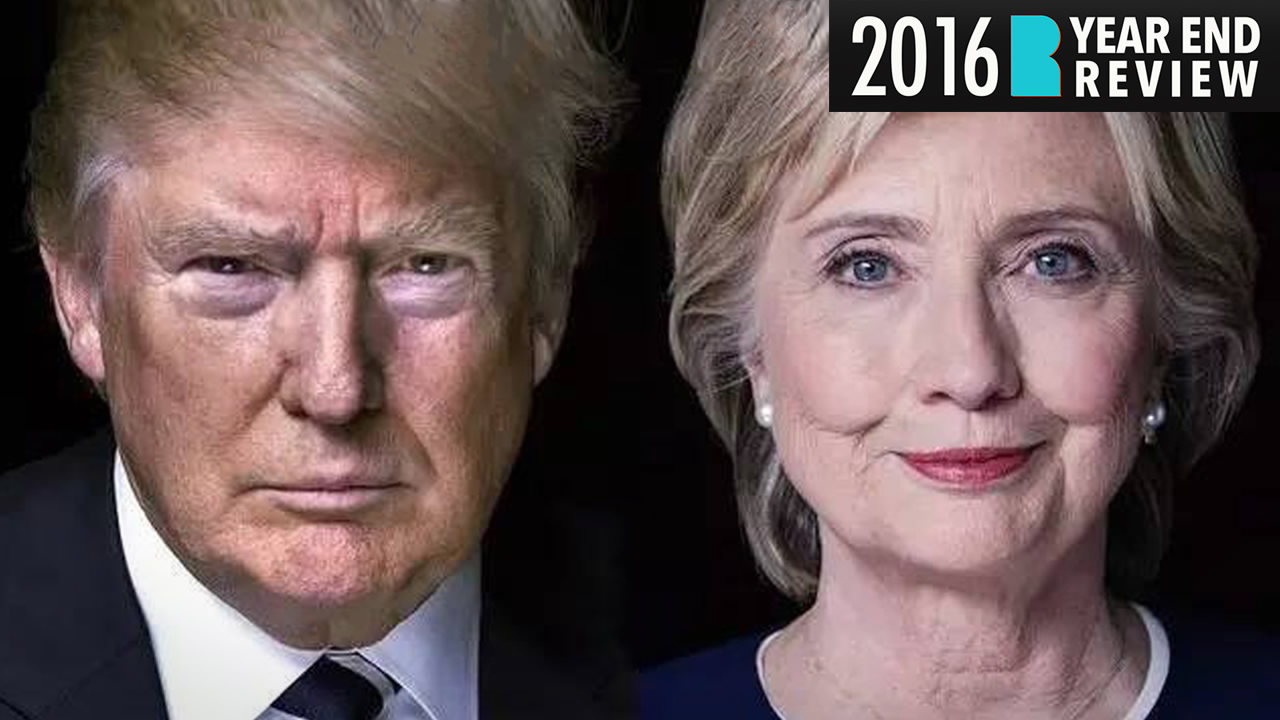
- Donald Trump upsets odds and the polls to be elected the 45th president of the United States, beating favorite Hillary Clinton in the electoral college despite comfortably losing the popular vote
- Populist campaign makes extensive use of social media - notably via Trump’s own Twitter account - to bypass and manipulate mainstream media coverage
- Trump plays to a constituency that felt it was not benefitting from economic growth in the US, and uses controversial language and policy proposals to dominate the agenda
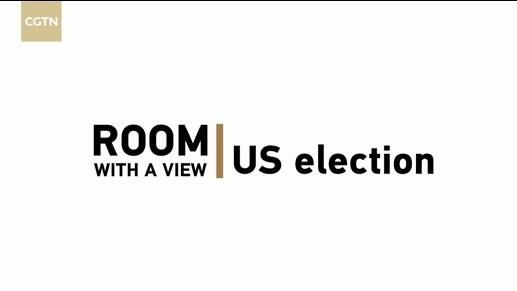
A sentence that was for many years a punchline to a joke became a most unlikely reality on November 8, 2016: Donald Trump was elected president of the United States.
A campaign that began in June 2015 with the reality TV star awkwardly descending an escalator in Trump Tower, New York and declaring "sadly the American dream is dead”, ended in the early hours of November 9, 2016 with the businessman giving a victory speech, watched on by an astounded world.
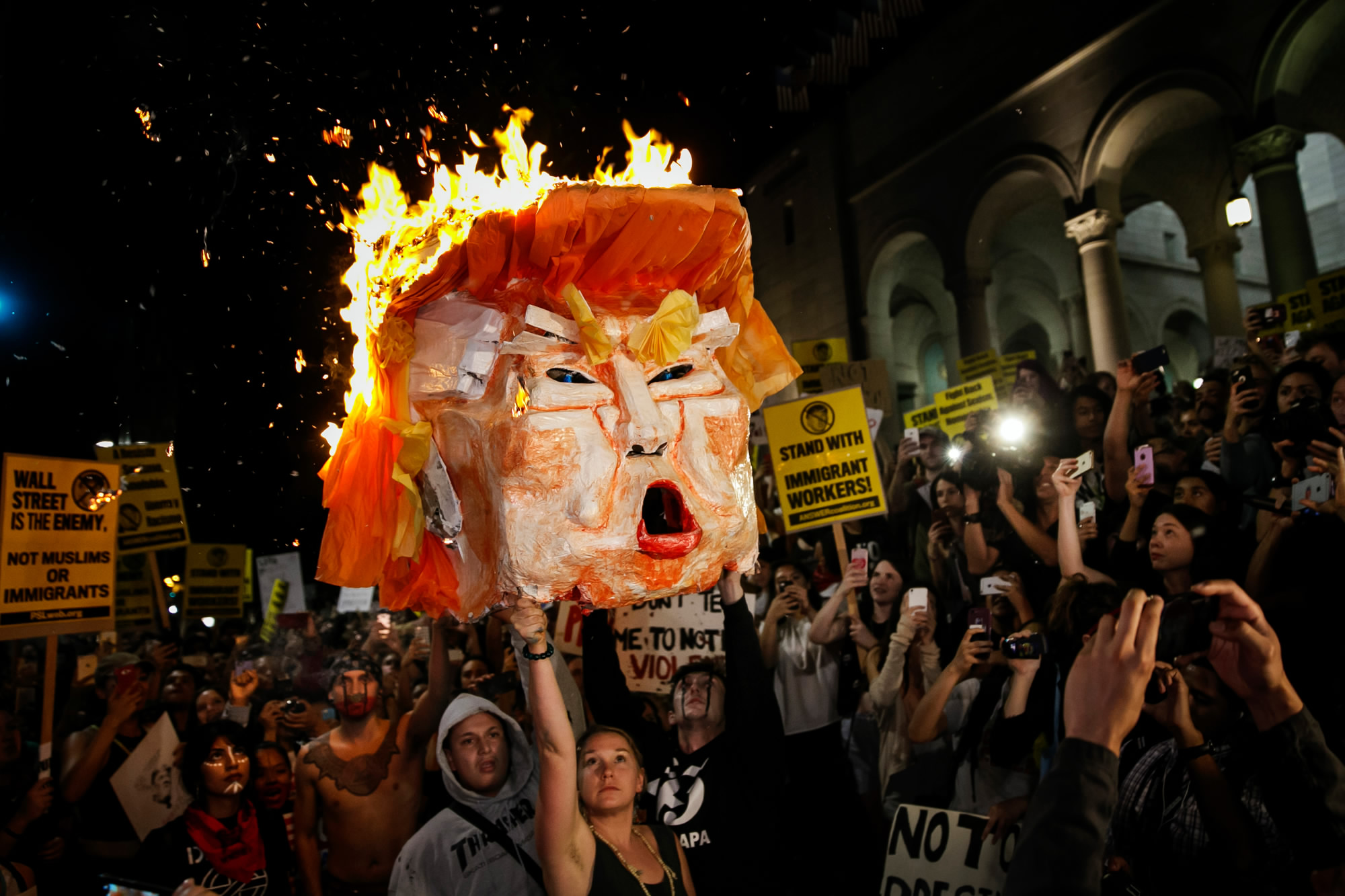
Anti-Trump protesters burn an effigy of the president-elect, Donald Trump, outside City Hall in Los Angeles, Calif., on Nov. 9, 2016. /CFP Photo
Anti-Trump protesters burn an effigy of the president-elect, Donald Trump, outside City Hall in Los Angeles, Calif., on Nov. 9, 2016. /CFP Photo
Trump was repeatedly discounted by the media, by Washington, and by the pollsters. But few reckoned on the strength of anti-establishment sentiment in the United States.
It was an unconventional but enduring campaign, helped by highly populist proposals and shock media tactics that ensured he was always headline news. He called for a wall to be built along the Mexico border. He pledged to ban Muslims from coming to the US. He said he would deport all illegal immigrants. He promised to return jobs that had long gone from America’s Rust Belt, the former industrial heartlands of the Mid-west.
Many were disgusted by his language and apparent divisiveness. But to others his plain-speaking, black and white view of the world was an attractive antidote to an elite political class they believed failed them. Trump was a candidate for change, a man with next to no political background triumphing over a woman - Hillary Clinton - with the kind of CV most White House wannabes would drool over.
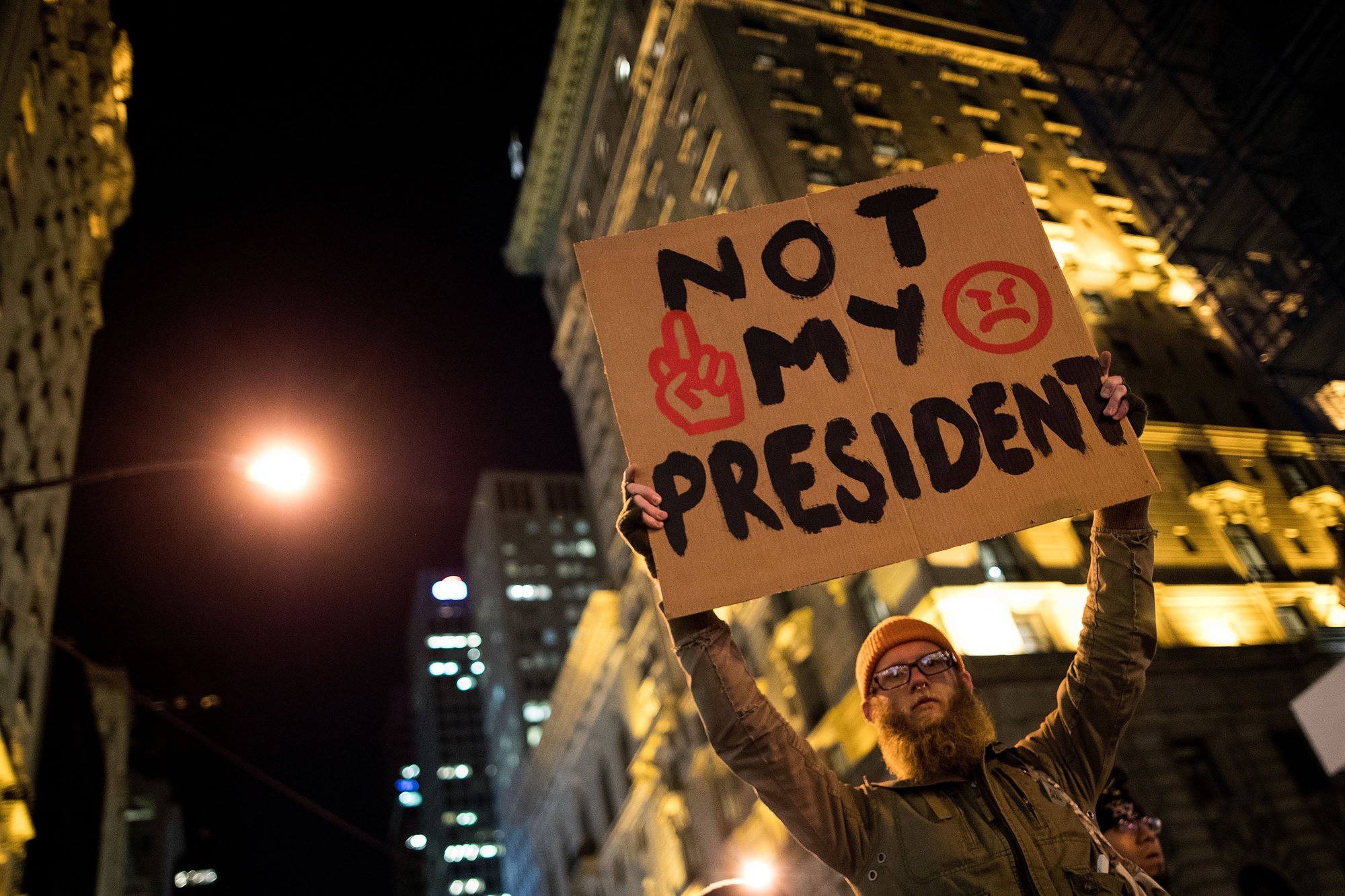
Anti-Donald Trump protesters march in the street on Fifth Avenue, November 11, 2016 in New York City. /CFP Photo
Anti-Donald Trump protesters march in the street on Fifth Avenue, November 11, 2016 in New York City. /CFP Photo
And not only was Trump’s campaign unconventional, he battled out scandals that would have sunk traditional candidates. Sexual assault allegations, the notorious Access Hollywood tape, refusing to file his tax returns, to mention but a few.
Having dispatched 16 Republican rivals in the primary season - including party favorites Jeb Bush and Marco Rubio - Trump moved onto the general election to face a heavily-fancied Democratic rival with problems of her own.
Clinton had squeezed past a fiery Bernie Sanders in the primaries. An FBI investigation into Clinton’s use of a private email server while Secretary of State followed her every move in the general election, but was a minor issue in the primaries after Sanders said in a debate that people were “sick and tired of hearing about your damned emails.” But Sanders’ economic populism resonated with many, the enthusiasm for his policies perhaps an early indicator of how US voters would eventually sway.
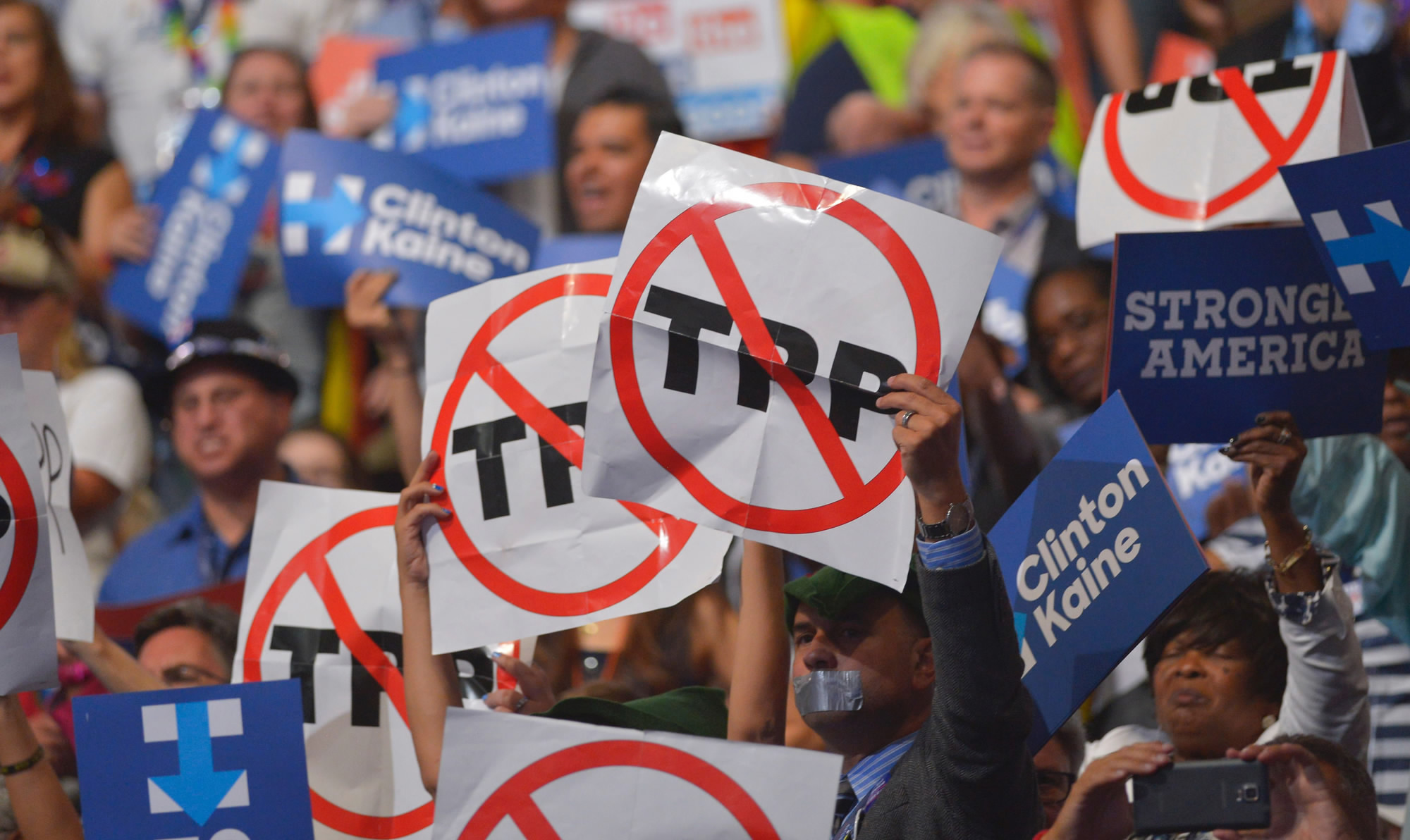
People hold signs against the Trans Pacific Partnership (TPP) on Day 3 of the Democratic National Convention at the Wells Fargo Center, July 27, 2016 in Philadelphia, Pennsylvania. /CFP Photo
People hold signs against the Trans Pacific Partnership (TPP) on Day 3 of the Democratic National Convention at the Wells Fargo Center, July 27, 2016 in Philadelphia, Pennsylvania. /CFP Photo
Clinton’s experience as a First Lady, Senator and Secretary of State was hung around her neck, and the praise and high favorability ratings she enjoyed as America’s top diplomat were soon forgotten. Indeed, this was a contest fought out between perhaps the two most unpopular candidates in election history.
Clinton came into the final straight well ahead, with three televised debate victories under her belt and a steady if uninspiring campaign. She was hugely favored to win. And indeed, she beat Trump in the popular vote, winning more votes than any other presidential candidate in history save for Barack Obama. She received around 2.8 million more votes than Trump, comfortably the biggest margin by which a US president has lost the popular vote.

President Barack Obama shakes hands with President-elect Donald Trump in the Oval Office of the White House in Washington, Thursday, Nov 10, 2016. /CFP Photo
President Barack Obama shakes hands with President-elect Donald Trump in the Oval Office of the White House in Washington, Thursday, Nov 10, 2016. /CFP Photo
But in the all-important electoral college, Trump came out on top - ultimately winning key states in the mid-west battleground by narrow margins to consign Clinton to a shock defeat - and leaving the rest of the world waiting anxiously to discover just what a President Trump will do in office.
Questions for 2017
-Will Trump act on his campaign rhetoric? What’s the future for immigration, healthcare trade deals, the role of the US in NATO, the US relationship with Russia?
-What will Trump’s presidency mean for China? Will trade deals, tariffs, the Asia pivot and the one-China policy all be on the agenda?
-Trump’s mastered social media: bypassing mainstream media to speak directly to voters while also influencing MSM agenda. Will he continue to use it in office?
-Fake news: in an election when fact-checking candidates became an industry, is online news sufficiently regulated? What are the consequences of allowing it to flourish?
(Written by Yang Di; Edited by John Goodrich; Video edited by Zhu Danni; and Room with a View produced by Tian Yi)

SITEMAP
Copyright © 2018 CGTN. Beijing ICP prepared NO.16065310-3
Copyright © 2018 CGTN. Beijing ICP prepared NO.16065310-3